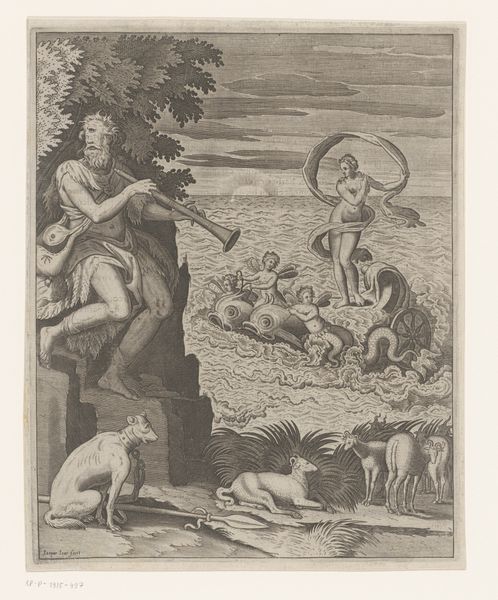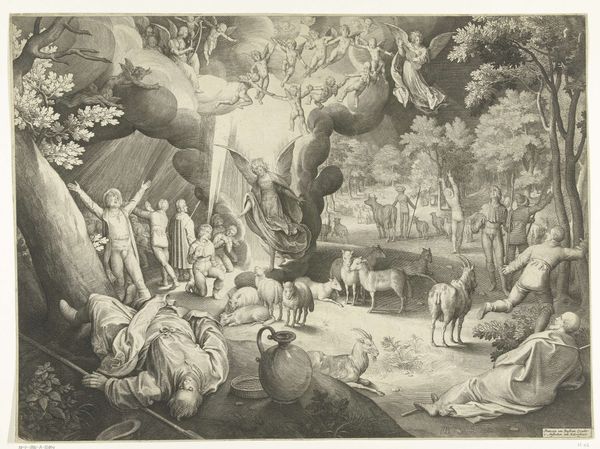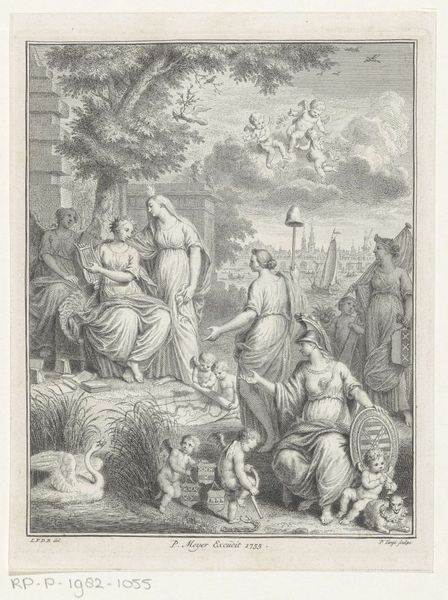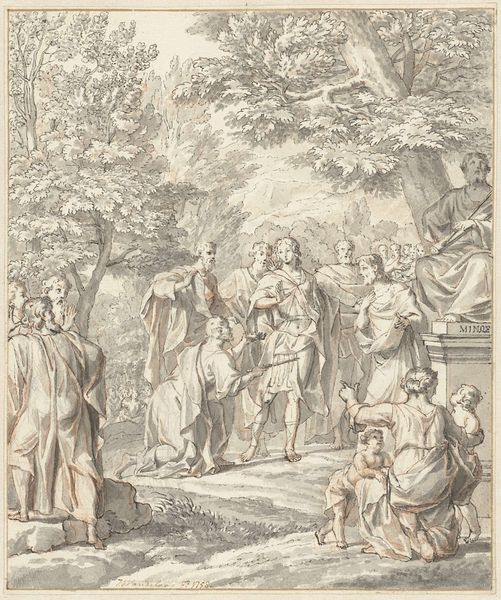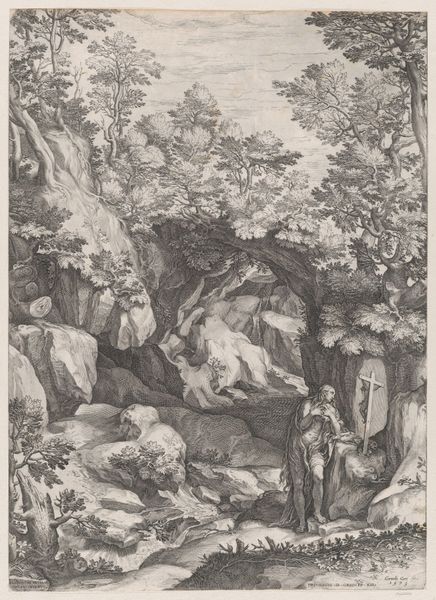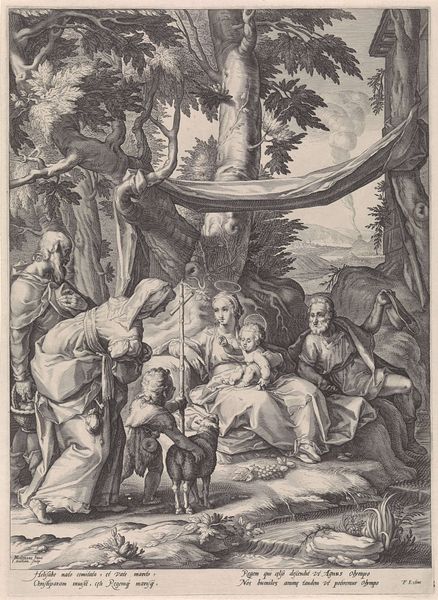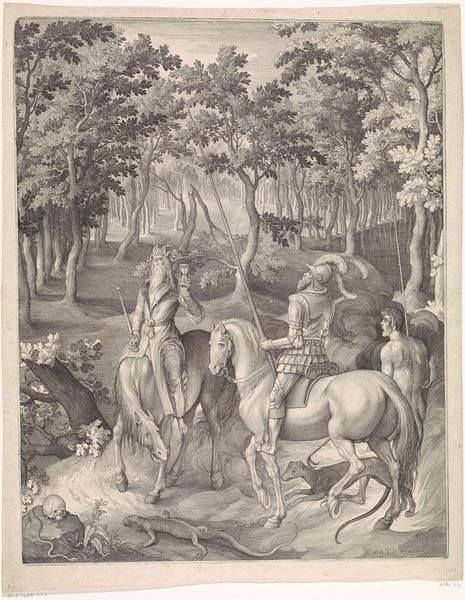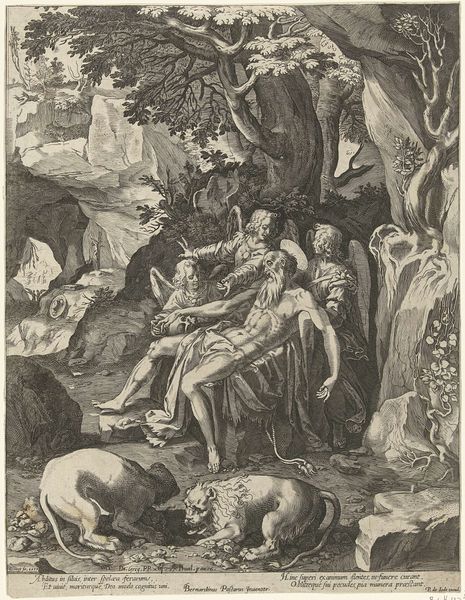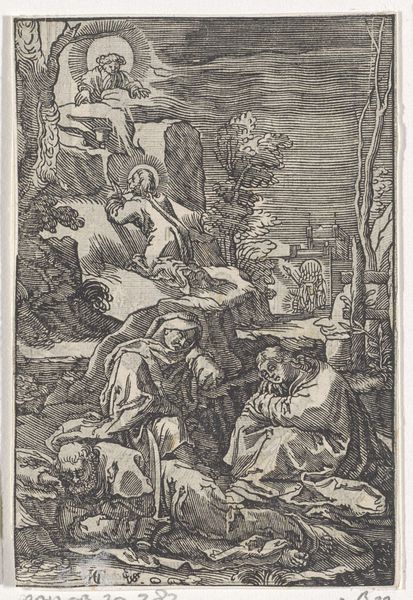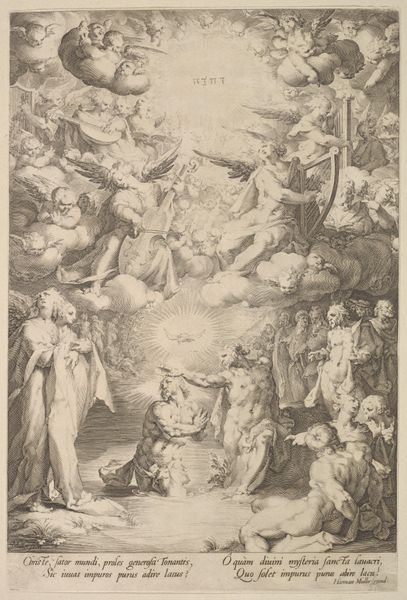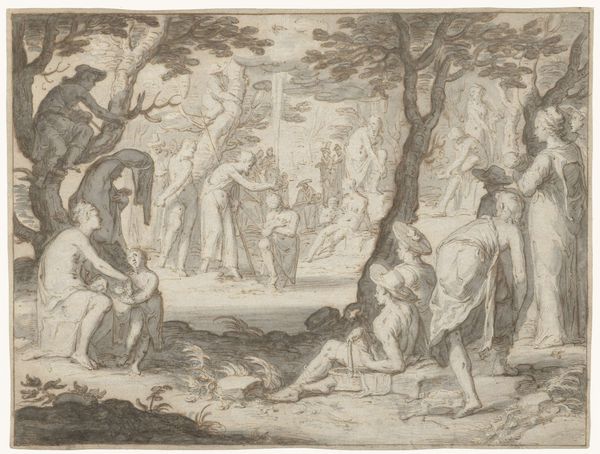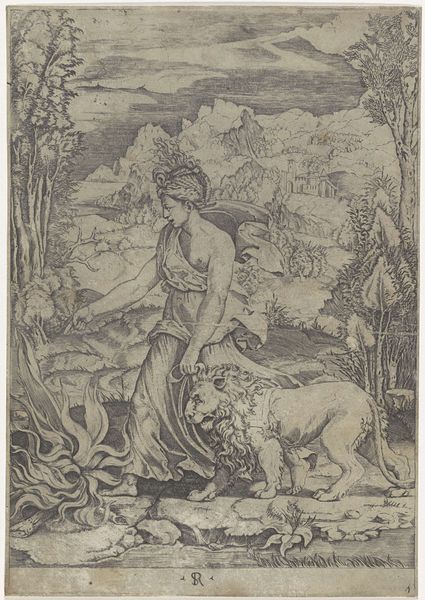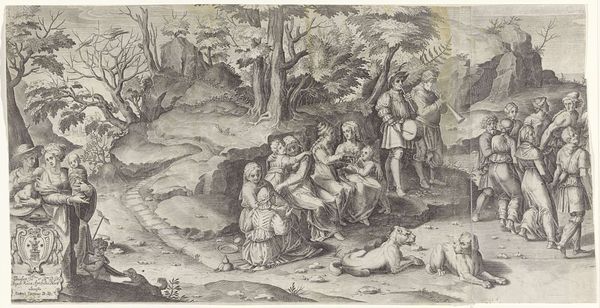
drawing, paper, ink, engraving
#
pencil drawn
#
drawing
#
narrative-art
#
baroque
#
pen sketch
#
pencil sketch
#
landscape
#
charcoal drawing
#
figuration
#
paper
#
ink
#
pencil drawing
#
line
#
engraving
Dimensions: width 411 mm, height 520 mm
Copyright: Rijks Museum: Open Domain
Curator: This is Nicolaes de Bruyn's 1618 engraving, "Koning Darius vindt Daniël ongedeerd in de leeuwenkuil," currently housed here at the Rijksmuseum. Editor: My first thought is how the artist created such drama using only lines. There's almost a theatrical feel to the scene. Curator: The composition definitely stages a moment of revelation. De Bruyn is playing with power here—the power of faith, the power of a king, the perceived power of beasts. Notice Darius above, witnessing Daniel's survival. What does it signify to have these political players onlooking above a scene with Daniel, lions, and some sense of performance of survival? Editor: It certainly positions Daniel's faith as a spectacle validated by political authority, yet the focus remains on Daniel's ordeal. Considering intersectional narratives, this work also begs the question of whether the miracle applies equally. Would another marginalized figure experience similar divine intervention, or is Daniel’s survival intrinsically linked to his privileged standing within a patriarchal system, where his spiritual devotion grants him preferential treatment? Curator: It's interesting that you bring up systems. The lions, rather than being symbols of wild, untamed nature, are practically props in this divinely sanctioned display of power. Consider the politics of imagery here. De Bruyn chooses to portray these majestic creatures as docile, reinforcing a European-centric worldview where even the "kings of the jungle" submit to perceived moral and religious superiority. Editor: Right, the narrative perpetuates a very specific message about civilization versus nature. Looking at the work, it becomes clearer how this historical context affects how one decodes an image. But, I would like to draw viewers' attention to how De Bruyn made a narrative work that doesn't give its power away instantly. In effect, he builds suspense in this historical visual construction. Curator: Agreed. There is such tension, which creates a point of connection even for us today. Understanding its production alongside our current lens allows for conversations beyond religious art. Editor: Precisely. Hopefully, listeners will leave questioning what social hierarchies they unknowingly support in contemporary contexts.
Comments
No comments
Be the first to comment and join the conversation on the ultimate creative platform.
